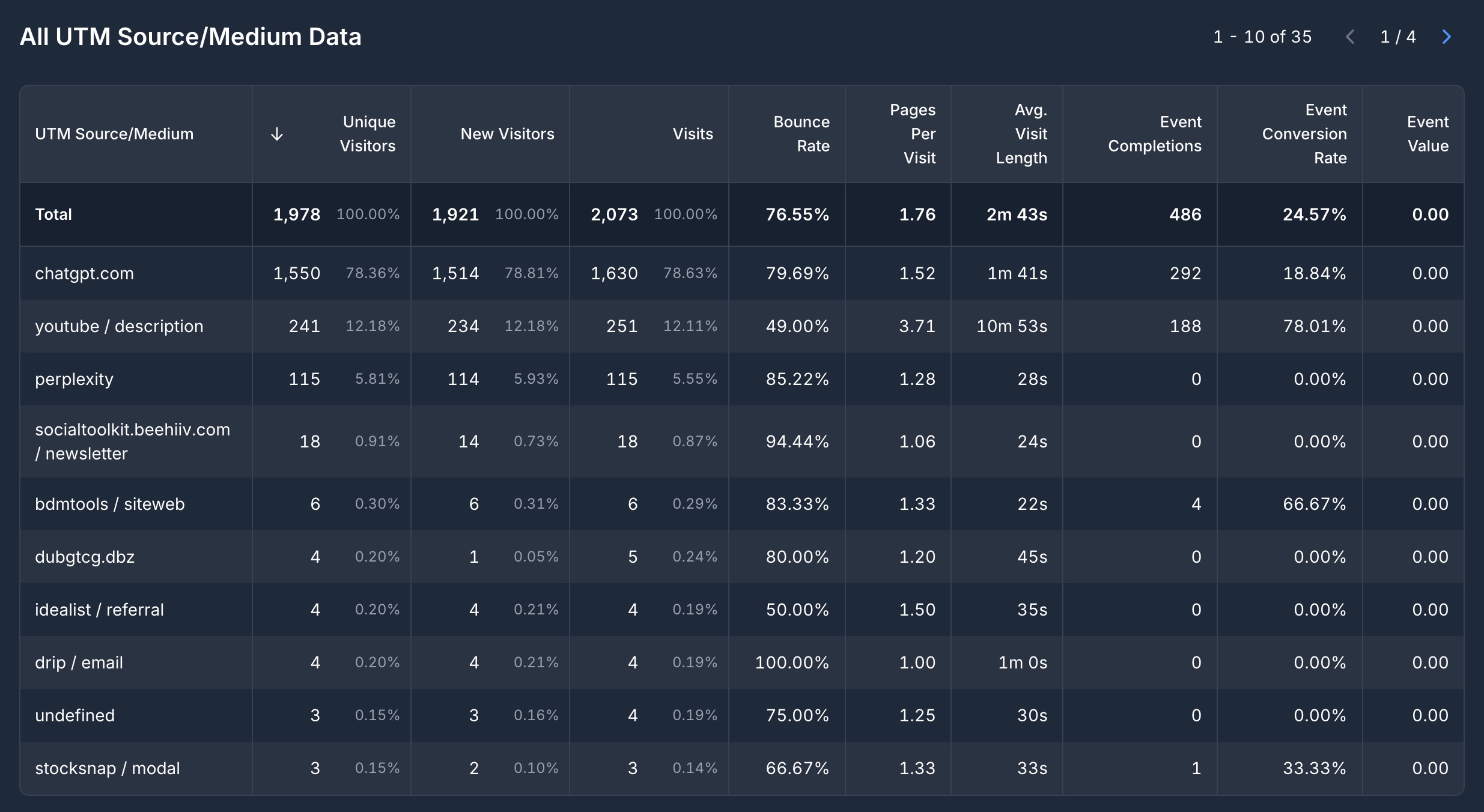Tracking Campaigns with UTM Parameters
UTM parameters are tags added to the end of a URL to help you track where your website traffic is coming from. They make it easy to see which marketing efforts are driving visitors, conversions, and revenue in your reports.
Here’s what they are and how you can use them in GoodMetrics.
The Five UTM Parameters
-
utm_source: Identifies the source of the traffic. This could be the name of the search engine, a newsletter name, or a social media platform (e.g.,utm_source=google). -
utm_medium: Specifies the medium used to reach the audience, such as email, CPC (cost per click), or display (e.g.,utm_medium=cpc). -
utm_campaign: Names the specific marketing campaign or promotion. It allows you to track the performance of a particular campaign across various platforms (e.g.,utm_campaign=spring_sale). -
utm_term: Used primarily for paid search campaigns to identify the keywords for which the ad was shown (e.g.,utm_term=yoga+shorts). -
utm_content: Differentiates ads or links pointing to the same URL but presented in different ways (e.g.,utm_content=carousel).
👉 Note: utm_source and utm_medium are required to understand traffic origins. The others are optional, providing more granular detail when needed.
How GoodMetrics Handles UTM Parameters
GoodMetrics automatically captures UTM parameters whenever they’re present in a link to your site.
In your Acquisition reports, you can break down traffic and conversions by source and medium, as well as by campaign, term, or content when those parameters are included.
This makes it easy to see which marketing efforts drive the most traffic and conversions — without any extra setup.
Here’s an example of how UTM Source/Medium data appears in GoodMetrics:

How to Add UTM Parameters to a URL
The easiest way to create UTM links is with our UTM Builder. It ensures your parameters are formatted correctly, keeps your URLs clean, and helps maintain consistency across campaigns.
Using the GoodMetrics UTM Builder (recommended)
- Open the UTM Builder
- Enter the URL, source, medium, and any optional parameters.
- Copy the generated link and use it in your campaigns.
Adding Parameters Manually
You can also add UTM parameters directly to a URL. Start with a question mark (?) after the base URL, then append each parameter as parameter=value, separated by an ampersand (&).
Example:
https://example.com/?utm_source=google&utm_medium=cpc&utm_campaign=spring_sale
While manual construction works, it’s easy to make mistakes (like typos, inconsistent casing, or incorrect separators). That’s why we recommend using our UTM Builder whenever possible.
UTM Parameter Best Practices
UTM parameters can be extremely effective for campaign tracking. However, if not used properly, they can clutter reports and distort metrics. Keep these best practices in mind:
-
Use lowercase: Ensures consistency and prevents case-sensitive discrepancies (
facebookvsFacebook). -
Use underscores (not spaces): Spaces become
%20in URLs, which looks messy and can cause inconsistencies. Underscores keep things clean and easier to read. -
Always include source and medium: These required parameters form the foundation of your tracking. Without them, you lose visibility into where traffic is coming from.
-
Use optional parameters selectively: Add
utm_campaignfor every campaign to track its performance. Reserveutm_termandutm_contentfor when you need extra detail (keywords, A/B testing, etc.). -
Avoid UTMs on internal links: Tagging links within your own site creates new sessions, which can distort metrics like bounce rate and average visit duration.
-
Keep values short and descriptive: Avoid overly long or vague terms.
-
Avoid sensitive information: Don’t include private or confidential data in UTM parameters. URLs can be shared publicly.